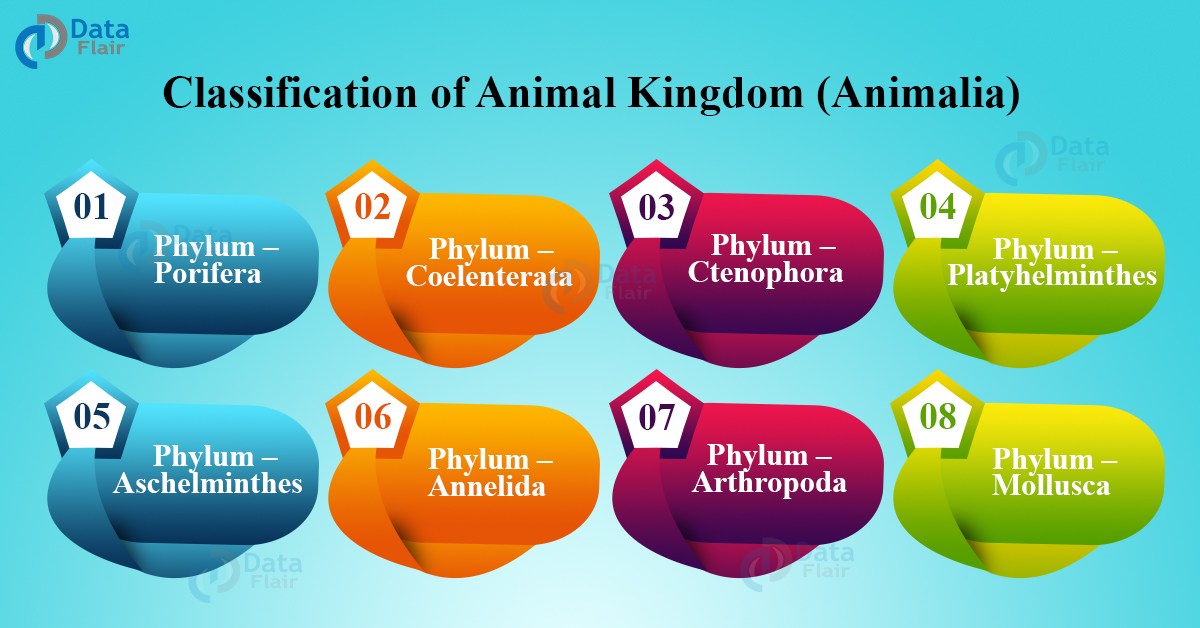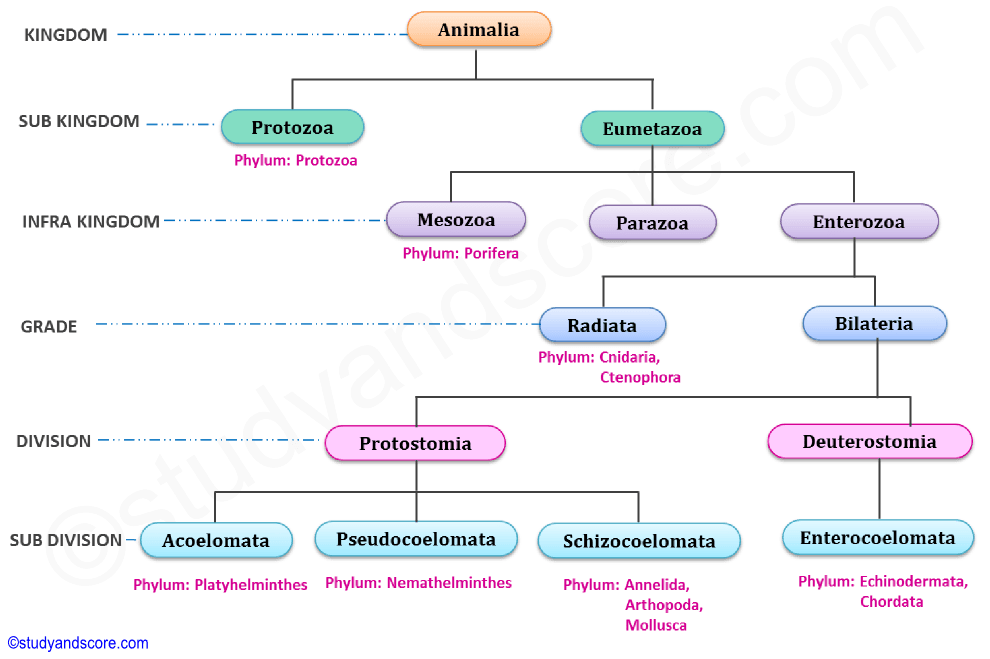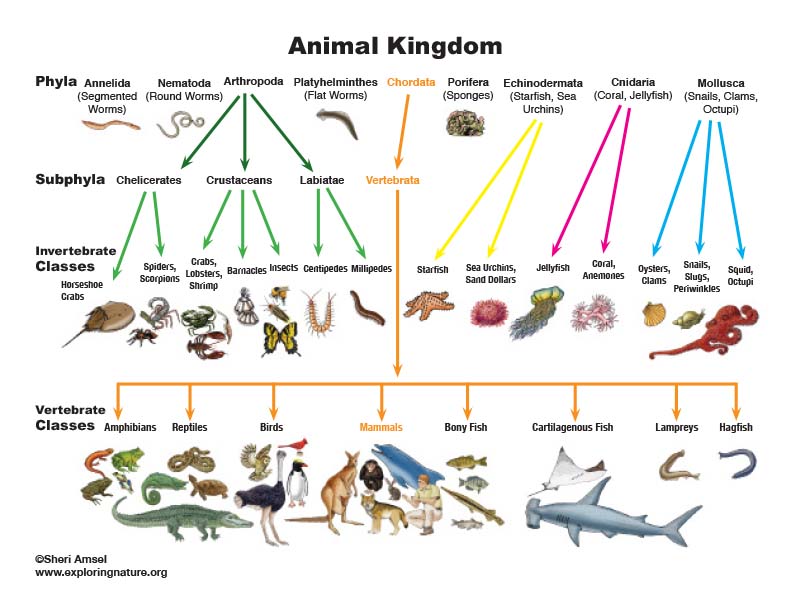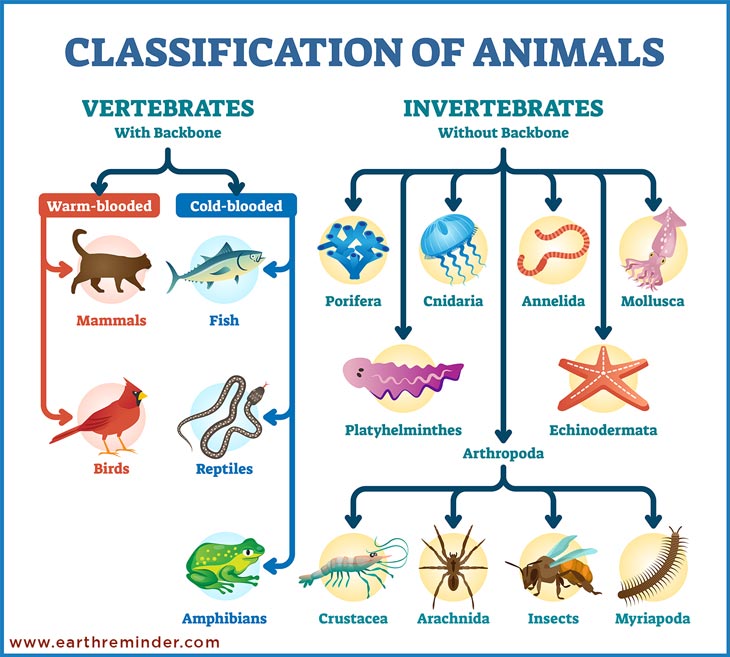
Classification Of Animal Kingdom Nonchordates And Chordates
There are different concepts followed to prepare a well-defined concept map of classification of the animal kingdom. This enables the students and mentors to properly communicate based on the features used to define the map. This map consists of a flow chart where the classifications are defined and placed as per their specific features.

BioEnglish Introduction to the Animal Kingdom
All rights reserved © 2024 Infogram. Terms & Privacy. Infogram and Infogr.am are registered trademarks of Prezi, Inc.

Top 110 + Flow chart of animal kingdom class 11
January 6, 2024 < http://www.exploringnature.org/db/view/Animal-Kingdom-Classification-Chart > Animal Kingdom Classification Chart

Classification of Animal Kingdom DataFlair
4.1 Basis of Classification 4.2 Classification of Animals When you look around, you will observe different animals with different structures and forms. As over a million species of animals have been described till now, the need for classification becomes all the more important.

Kingdom Animalia flow chart, class 11, NCERT. kexam
The five kingdoms are: animals (all multicellular animals) plants (all green plants) fungi (moulds, mushrooms, yeast) protists (Amoeba, Chlorella and Plasmodium) prokaryotes (bacteria, blue-green.

Animal Kingdom Classification Flow Chart / Maggie's Teachers' Lounge a how to paragraph
Four kingdoms are classified under the eukarya domain (animal, plant, fungus, protist) while the other two fall under the bacteria and archaea. Kingdoms There are in total six different kingdoms in which all living organisms can be classified. Here they are in more detail: Animalia This kingdom is composed of eukaryotic, multicellular, organisms.

Kingdom Animalia flow chart, class 11, NCERT. kexam
One of the most fundamental forms of classification of animals is the presence or absence of the notochord. Hence, two major groups exist, namely: Chordates and Non-chordates. Non-chordates and the Chordates The notochord is a flexible rod made out of a material similar to cartilage.

Animal Kingdom Classification Flow Chart / Maggie's Teachers' Lounge a how to paragraph
4.1 BASIS OF CLASSIFICATION Inspite of differences in structure and form of different animals, there are fundamental features common to various individuals in relation to the arrangement of cells, body symmetry, nature of coelom, patterns of digestive, circulatory or reproductive systems.

Animal Kingdom Classification Chart
It is classified into a number of phyla. The animal kingdom concept map outlines all the concepts related to the topic on a single page. This can help the students memorize the concepts during the examination. To know more about other concept maps, keep visiting BYJU'S website. Further Reading: Animal Kingdom Animal Kingdom Classification

4 Animal Kingdom Classification Biology Notes for IGCSE 2014
Class 11 Biology (India) 20 units · 94 skills. Unit 1 The living world. Unit 2 Biological classification. Unit 3 Plant kingdom. Unit 4 Animal kingdom. Unit 5 Morphology of flowering plants. Unit 6 Structural organization in animals. Unit 7 Cell : The unit of life. Unit 8 Biomolecules.

Classification of Animal Kingdom Free Biology Notes Rajus Biology
3 Introduction universalacceptanceinthenearfuture.Indeed,eventheordinalendings in-iformesadoptedbyAmericanichthyologistsandornithologistsare.

Animal Kingdom Concept Map An Overview of Animal Kingdom
In the classification of animals chart, they move from the simplest to the most complex. The different phyla in the classification of animals are as follows: Phylum Porifera. Phylum Coelenterata. Phylum Platyhelminthes. Phylum Nematoda. Phylum Annelida. Phylum Arthropoda. Phylum Mollusca.

Animal Kingdom Classification System Class 11 Notes
Animal kingdom classification is an important system for understanding how all living organisms are related. Based on the Linnaeus method, species are arranged and grouped based on shared characteristics. This system of animal kingdom classification was developed by Swedish botanist Carolus (Carl) Linnaeus in the 1700s.

What Are the Classification of Animals? Earth Reminder
Major Animal Phyla. Members of the animal kingdom are divided into more than 30 phyla. Table below lists the nine phyla with the greatest number of species. Each of the animal phyla listed in the table has at least 10,000 species.. This page titled 10.2: Animal Classification is shared under a CK-12 license and was authored, remixed,.

Two Classification of Animals Vertebrates and Invertebrates Vertebrates and invertebrates
Animal Kingdom Classification Flow Chart Protists and Fungi Gareth Editorial Staff.2003-07-03 Explores the appearance, characteristics, and behavior of protists and fungi, lifeforms which are neither plants nor animals, using specific examples such as algae, mold, and mushrooms.

Top 110 + Flow chart of animal kingdom class 11
Classification of Animal Kingdom is based on various fundamental features like - Levels of Organisation, Symmetry, Diploblastic and Triploblastic Organisation, Coelom development, Segmentation of the body and Presense or absence of Notochord. The broad classification of Animalia based on common fundamental features: Levels of Organisation